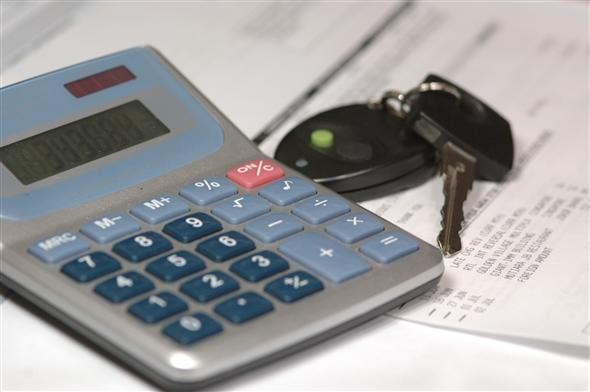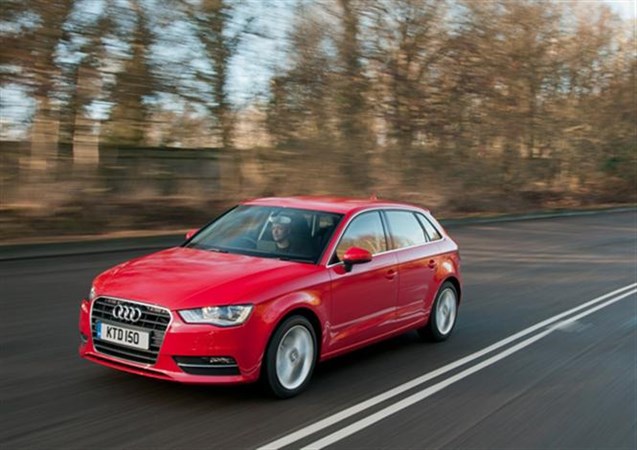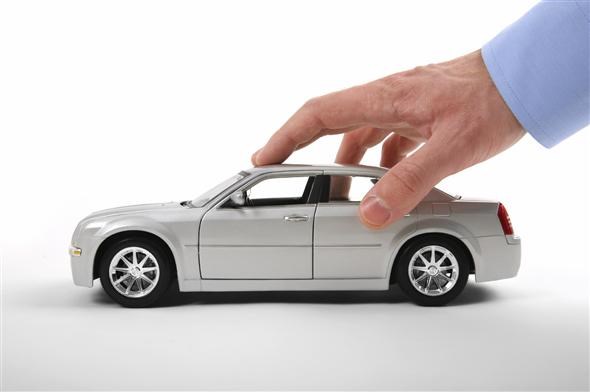Company car tax: it’s something many of us don’t like to think about but it pays to be kept in the loop about the changes that take place each year.
To help you stay up-to-date, here we take a closer look at how company car tax is changing in 2016.
Diesel surcharge remains
One of the key announcements for company car drivers made in the 2015 Autumn Statement was that the diesel surcharge is going to remain until at least 2021.
Originally due to be dropped in April 2016, the Government made the decision to postpone the scrapping of the surcharge after diesel car emissions came under intense scrutiny following the Volkswagen scandal.
A new testing process to more accurately record real-world emissions is expected to be put in place in 2016 which will likely see emission figures, particularly for diesel cars, rise.
If you’re currently running a Volkswagen car or commercial vehicle and the figures increase after a retest, HM Revenue and Customs (HMRC) confirmed in October that your BIK tax will not be affected as a result.

Petrol, diesel or hybrid?
If the scrapping of the diesel surcharge had remained in place, diesel cars would have been taxed the same as petrol from April and many business drivers running a diesel car would have seen their BIK tax bills fall a little for the 2016/17 tax year.
Despite advance in petrol engine technology, diesel is almost always the most economical choice like-for-like and if you travel a lot of miles each year – especially on motorways – you’ll see a tank of fuel go much further.
Given that diesels generally emit less CO2 than petrol engines, despite the higher P11D values, they are usually the cheaper option in tax, even when you add the three percent surcharge.
Petrol engines are usually smoother and quieter than diesel alternatives, though.
If you’re considering a hybrid, there are lots of advantages, especially if you opt for a plug-in car which can travel a reasonable amount of miles on electric power alone. CO2 emissions are usually lower too, so it’ll cost you less in tax, provided your car isn’t too expensive. Hybrids are taxed at petrol and diesel rates depending on which fuel the engine requires.
Fuel pricing
There’s been some relief for motorists over recent months with the price of petrol and diesel dipping below £1 per litre, the cheapest it’s been since 2009.
And the long-term outlook is good with experts predicting the price of diesel could fall to as low as 90p per litre this year.
Around 75 percent of the price of UK fuel goes to the Treasury in duty and VAT. While fuel duty has remained frozen for the past five years, many MPs and campaigners are urging the Government to cut it further to bring more savings to drivers.
In the 2015 Autumn Statement there was no mention of any changes to fuel duty, the next time it could be revisited is the annual Budget in March.
BIK tax bands in 2016

BIK tax bands change each year and for almost everyone it means an increase.
In April 2016 almost all cars will move up two tax bands and then the following year there will be another two band jump. In the 2017/18 tax year the increase is even greater, an additional three percent for all cars except those that emit more than 190g/km.
See below BIK bands up to the 2019/20 tax year. Remember that you need to add a further three percent if you’re running a diesel car.
|
BIK % |
2015/16 |
2016/17 |
2017/18 |
2018/19 |
2019/20 |
|
|
CO2 (g/km) |
CO2 (g/km) |
CO2 (g/km) |
CO2 (g/km) |
CO2 (g/km) |
|
0 |
0 |
N/A |
N/A |
N/A |
N/A |
|
5 |
0-50 |
N/A |
N/A |
N/A |
N/A |
|
6 |
N/A |
N/A |
N/A |
N/A |
N/A |
|
7 |
N/A |
0-50 |
N/A |
N/A |
N/A |
|
8 |
N/A |
N/A |
N/A |
N/A |
N/A |
|
9 |
51-75 |
N/A |
0-50 |
N/A |
N/A |
|
10 |
N/A |
N/A |
N/A |
N/A |
N/A |
|
11 |
N/A |
51-75 |
N/A |
N/A |
N/A |
|
12 |
N/A |
N/A |
N/A |
N/A |
N/A |
|
13 |
76-94 |
N/A |
51-75 |
0-50 |
N/A |
|
14 |
95-99 |
N/A |
N/A |
N/A |
N/A |
|
15 |
100-104 |
76-94 |
N/A |
N/A |
N/A |
|
16 |
105-109 |
95-99 |
N/A |
51-75 |
0-50 |
|
17 |
110-114 |
100-104 |
76-94 |
N/A |
N/A |
|
18 |
115-119 |
105-109 |
95-99 |
N/A |
N/A |
|
19 |
120-124 |
110-114 |
100-104 |
76-94 |
51-75 |
|
20 |
125-129 |
115-119 |
105-109 |
95-99 |
N/A |
|
21 |
130-134 |
120-124 |
110-114 |
100-104 |
N/A |
|
22 |
135-139 |
125-129 |
115-119 |
105-109 |
76-94 |
|
23 |
140-144 |
130-134 |
120-124 |
110-114 |
95-99 |
|
24 |
145-149 |
135-139 |
125-129 |
115-119 |
100-104 |
|
25 |
150-154 |
140-144 |
130-134 |
120-124 |
105-109 |
|
26 |
155-159 |
145-149 |
135-139 |
125-129 |
110-114 |
|
27 |
160-164 |
150-154 |
140-144 |
130-134 |
115-119 |
|
28 |
165-169 |
155-159 |
145-149 |
135-139 |
120-124 |
|
29 |
170-174 |
160-164 |
150-154 |
140-144 |
125-129 |
|
30 |
175-179 |
165-169 |
155-159 |
145-149 |
130-134 |
|
31 |
180-184 |
170-174 |
160-164 |
150-154 |
135-139 |
|
32 |
185-189 |
175-179 |
165-169 |
155-159 |
140-144 |
|
33 |
190-194 |
180-184 |
170-174 |
160-164 |
145-149 |
|
34 |
195-199 |
185-189 |
175-179 |
165-169 |
150-154 |
|
35 |
200-204 |
190-194 |
180-184 |
170-174 |
155-159 |
|
36 |
205-209 |
195-199 |
185-189 |
175-179 |
160-164 |
|
37 |
210+ |
200+ |
190+ |
180+ |
165+ |
Our low-tax champions for 2016
Petrol choice – Audi A3 1.4 CoD SE

Although petrol is not the conventional choice for company car drivers, Audi’s 1.4-litre petrol engines with the firm’s ‘Cylinder on Demand’ (or CoD) technology offer some strong running cost figures. Fuel is saved by shutting off two of the engine’s four cylinders under lighter loads such as when the driver isn’t accelerating.
CO2 emissions of 107g/km for the 148bhp 1.4-litre petrol mean the car slots into an 18 percent BIK tax band for the 2016/17 tax year, that’s 1 percent lower than the 99g/km 108bhp 1.6-litre diesel A3 Sportback.
Click here to read our full review of the Audi A3 Sportback
Diesel choice – Peugeot 308 SW

To find a hatchback these days with CO2 as low as 85g/km is not as difficult as it sounds, diesel engine technology has progressed so much over the past few years. To find an estate car with the same figures though is impressive which is why we’re big fans of the Peugeot 308 SW.
Couple those impressive running costs with a practical 660-litre boot (the same as its big brother the 508 SW estate) and an uncluttered, modern interior, we think the 308 SW is one of the best all-rounders you can buy.
Click here to read our full review of the Peugeot 308 SW
Hybrid choice – Mitsubishi Outlander PHEV

Following revisions in 2015, CO2 for the Outlander PHEV reduced by 2g/km down to 42g/km, with claimed average fuel economy up from 148mpg to 156mpg, slotting the car into a seven percent BIK tax band for the 2016/17 tax year.
There are two batteries under the bonnet alongside a petrol engine which enable the Outlander to travel 32 miles on electric power alone; it’s also the only car currently which can be driven off-road in all-electric mode.
Fitted with a rapid-charger socket as standard, you can get 80 percent of the battery life back in just 30 minutes, or it’ll take five hours using a domestic socket.
Click here to read our full review of the Mitsubishi Outlander
Calculating your company car tax
Calculating your company car tax is easy with the Parkers company car tax calculator. Simply enter the car you wish to calculate by using the drop-down menus plus the amount of tax you pay – 20, 40 or 45 percent.
Looking for more information? These articles may help…
Top five diesel coupe company cars
Top five plug-in hybrid company cars
Top five company cars to watch out for in 2016
Fast hatchbacks for less than £80 a month
Just so you know, we may receive a commission or other compensation from the links on this website - read why you should trust us.




